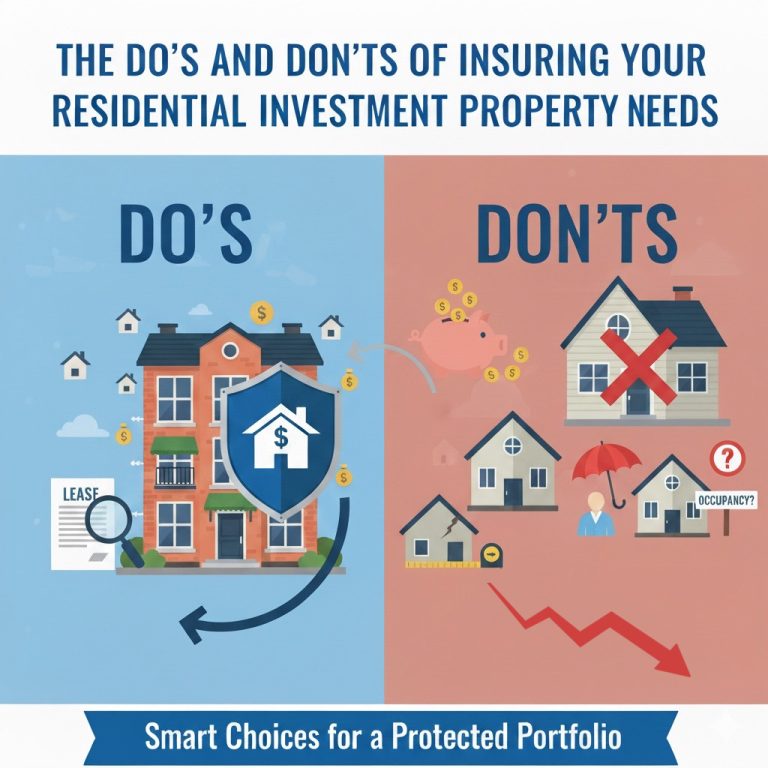
Real estate investing can be one of the most rewarding wealth-building strategies — but it also comes with unique risks. Unlike an owner-occupied home, a residential investment property faces exposures tied to tenants, vacancies, property damage, liability claims, and income disruption. Without the right insurance coverage in place, even a single incident could jeopardize your returns or your portfolio.
Landlord or “dwelling fire” policies are the foundation of real estate investor protection. They’re specifically designed for tenant-occupied properties and cover the structure itself against perils like fire, wind, vandalism, or theft. These policies differ by form:
– DP1: Basic perils, named risk coverage.
– DP2: Broader named perils including water damage, falling objects, etc.
– DP3: Comprehensive “all-risk” coverage with exclusions listed.
This type of policy also includes loss of rental income if a covered event makes the property uninhabitable.
Liability exposure is one of the biggest risks real estate investors face. If a tenant, visitor, or contractor is injured on your property, you could face expensive lawsuits. Landlord policies typically include liability protection, but larger portfolios often need umbrella liability for additional coverage beyond standard limits.
An umbrella policy extends liability protection across multiple properties, covering lawsuits that exceed your primary policy limits. This is particularly important as your portfolio grows, a serious injury or wrongful death claim could easily surpass $1 million.
– Flood Insurance: Standard landlord policies exclude flood damage, a must-have in flood-prone regions.
– Earthquake/Windstorm Riders: Essential in states with seismic or hurricane risk.
– Vacancy Coverage: Properties in transition face unique risks not covered by standard policies.
– Builder’s Risk: If you’re renovating or flipping, this covers construction-related risks.
Insurance isn’t just a legal requirement, it’s an investment in the stability of your real estate portfolio. By tailoring coverage to your specific property type and risk profile, you protect not only your physical assets but also your long-term income and financial goals.